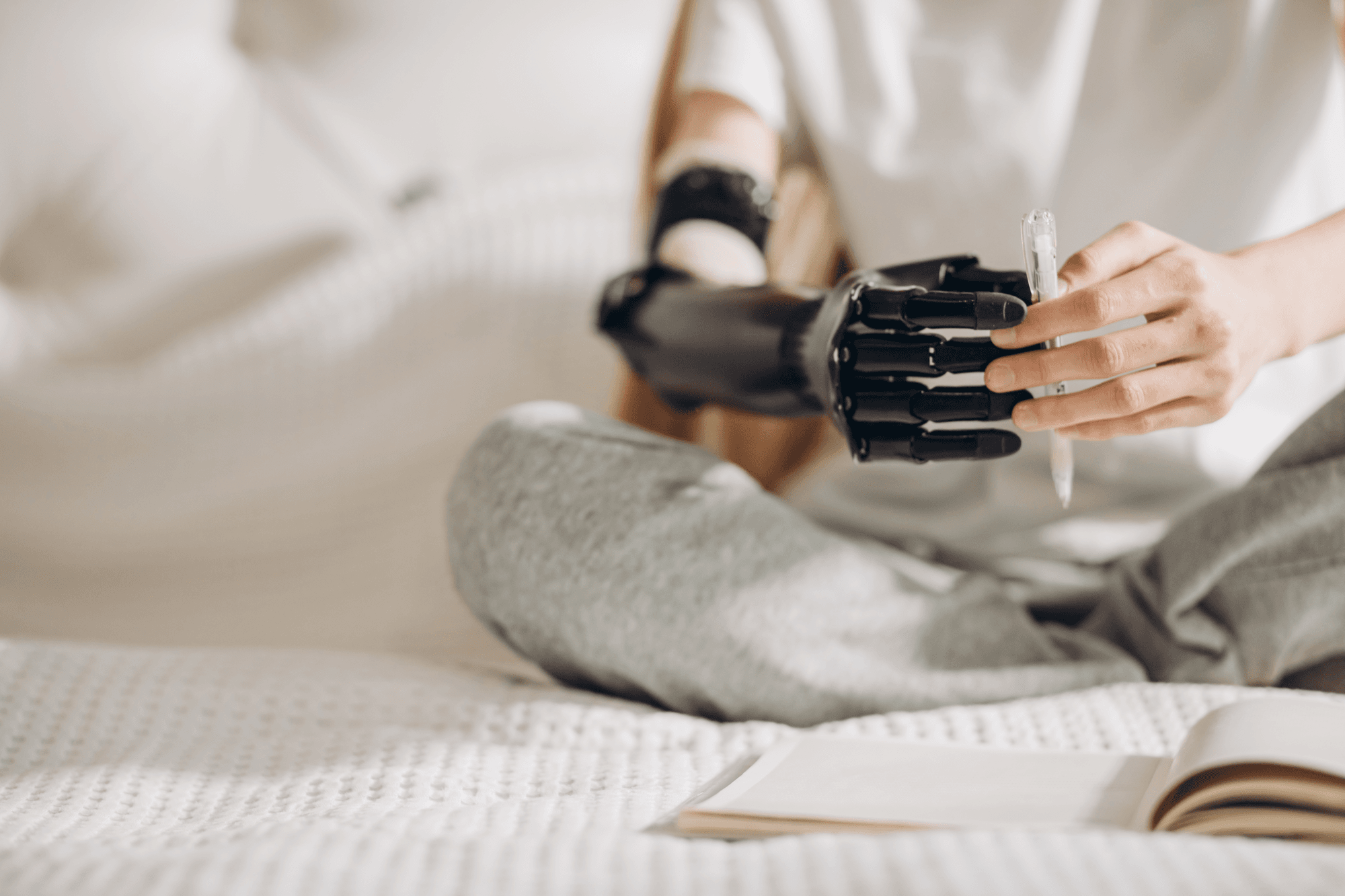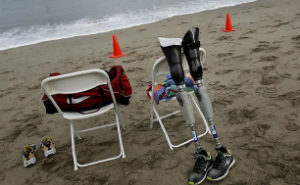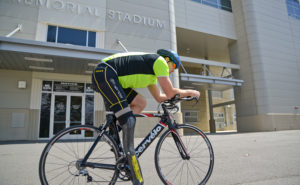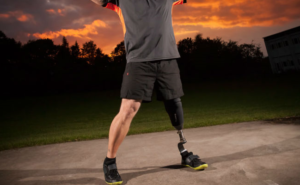Deciding to get a prosthetic replacement limb is a major step in the right direction for a person ready to continue pursuing and living their dreams. The trauma of losing a limb can be devastating at first. However, there is still hope. So, how does a prosthetic leg or other limb work?
People with disabilities can now walk, run, and even swim as well as they did before losing a limb. All of this is due to recent technological advancements in the device known as a prosthesis. Most people don't notice modern artificial limbs, because they work so well and look natural!
It can even be intimidating to learn about the basic process of using prosthetic limbs and how they work. This article will go over the fundamentals of prosthetics and facts. This information will help you understand what to expect as you move forward.
Amputation Site
So, how does a prosthetic leg work? You must first understand that the location of the amputation can impact how the leg functions.
An above-knee amputation, for example, will have a different type of prosthetic piece than a below-knee amputation. A below-knee prosthetic leg is typically easier to use than an above-knee prosthetic leg. This is due to the knee still intact, and the prosthetic leg requires less effort to move, allowing greater flexibility.
A below-knee amputation, or transtibial, means your artificial limb will have a socket, prosthetic foot, adapters, and connection elements. The residual limb is held in the socket. In an above-knee (transfemoral) amputation, your artificial leg will have a prosthetic knee joint, prosthetic foot, socket, and connection and adapter elements.
How Does A Modern Prosthetic Leg Work?
Prosthetic Leg Components
Fortunately, modern technological advances have made considerable strides in the components of prosthetic legs. While historically prosthetics were made of wood or iron, today's pieces are made of newer, even lighter, and more durable materials like carbon-fiber composites. Also, the use of the most recent materials can be of great help for limbs cosmetically.
So, what are the components of a prosthetic leg?
Pylon
- Pylon: This is the structural support – the component that connects the socket to the prosthetic foot. Traditionally, it has been made of metal rods because it has to provide proper structural support. Pylons, on the other hand, have recently been made from less-heavy carbon-fiber composites.
The pylons are sometimes encased in a cover, which is typically made of a foam-like material. It is possible for this cover to be colored to match the recipient's skin tone and shaped accordingly, giving the prosthetic limb a more realistic appearance.
Socket
- Socket: This part connects to the patient's residual limb stump or limb. The socket must be fitted accurately to avoid damage or irritation to the skin or underlying tissues because it transmits forces from the prosthetic limb to the patient's body.
Typically, a soft liner is placed inside the socket, but the patient may also require additional layers of prosthetic socks for a more close-fitting, comfortable feel. This is made to order for each patient. One will never be able to walk comfortably or naturally without a well-fitting socket.
Suspension System
- Suspension system: A prosthetic leg is firmly attached during use, but can be comfortably removed thanks to the suspension system, which keeps the body attached to the prosthetic limb. This mechanism can take several forms. For instance, sleeves, belts, or straps are used to secure the prosthetic device in a harness system.
However, in some types of amputations, the prosthetic can remain attached simply by a good fit around the shape of the residual limb. A suction system is a common type of suspension mechanism. In this case, the prosthetic limb fits over the residual limb and is held in place by an airtight seal.
Getting Fitted for a Prosthetic Leg
The waiting period for limb fitting begins once all swelling has subsided and the surgical site has healed completely — usually around two to six months post-surgery. Following the arrival of the limb, physical therapy begins. Physical therapy can last up to 12 months, depending on the patient.
Appointments for prosthetic adjustments will proceed over time, in line with body changes, and to adapt the new limb for better function and comfort. People may require new prosthetics as they become more physically active or wish to participate in different sports.
Important Steps for Fitting
Getting a fitting for a prosthetic leg can take a while, but if you understand how the process works, you will also better understand how the leg works. Because not all artificial limbs are formed equally, you can learn more about the particular legs available for specific activities when you meet with a prosthetist. Having the answers to “How does a prosthetic leg work” helps you understand the details required for the following steps:
- Take a mold: Once the amputation is complete and the leg has begun healing, a prosthetist takes a digital measurement of the residual limb or a mold. They use the mold to build the prosthetic leg so that it fits better.
- Go to a fitting: After the lab has finished making your new limb, you will have a fitting. You may need several fittings to ensure it fits perfectly.
- Make necessary changes: This is a crucial step because having an ill-fitting prosthetic is detrimental to your recovery. Your leg should fit snugly in the socket, and any necessary adjustments should be made. Make sure the liner is also comfortable.
- Attend physical therapy: Physical therapy can help you learn how to walk with your new prosthetic leg, but also help you understand how the leg works. It also helps your body learn how to adapt to it. Patience and commitment to hard work can make all the difference in getting used to your new limb.
Getting Used to a New Limb
Even after you finish your initial physical therapy, learning to walk with your new leg can be difficult. If you notice any of the following symptoms, please notify your prosthetist and rehabilitation team:
- Phantom limb pain. Uncomfortable sensations of pain that make you feel your limb is still there could result from neuronal changes, peripheral nerve damage, or nerve hyperactivity. Your doctor may advise you to take over-the-counter medication to relieve the pain.
- Hyperhidrosis, or excessive sweating, can be caused by an ill-fitting prosthetic, which can cause skin problems.
The shape of the residual limb changes. Usually, this happens after the first year of amputation, because the tissue takes on a more fixed form. This may affect the fit of the socket.
Remember
Procuring a prosthesis represents the culmination of evaluation, assessment, design, construction, fitting, basic training, and final follow-ups, resulting in a perfect personalized device. It is critical that you work with a prosthetist who listens to your goals and needs, and to whom you will have relatively easy access for maintenance and adjustments over time.
Following an amputation, a healthy fitness routine and diet are more important than ever. Muscle strength, coordination, and a healthy weight make it easier to stay active. Practice, like any skill, enables you to walk with a prosthetic much easier and more naturally.



